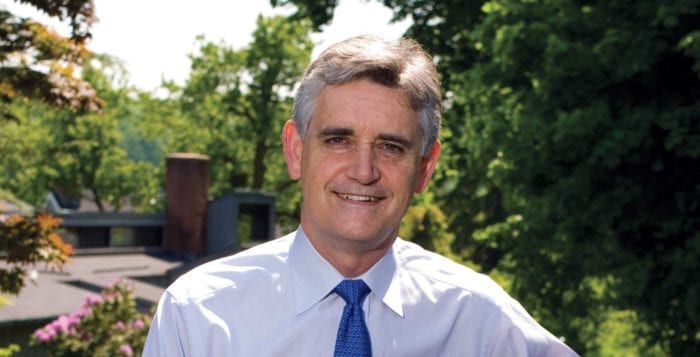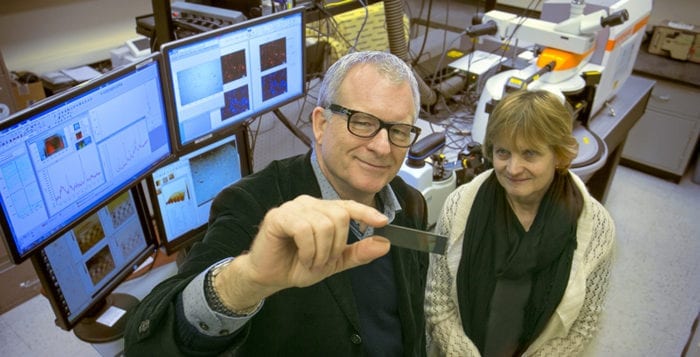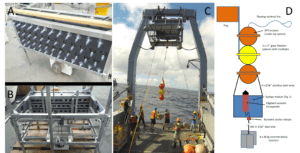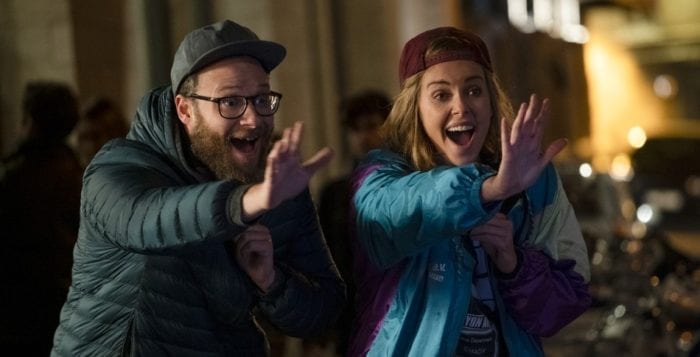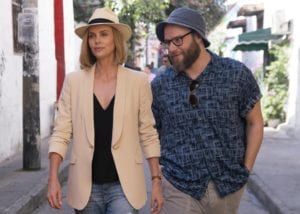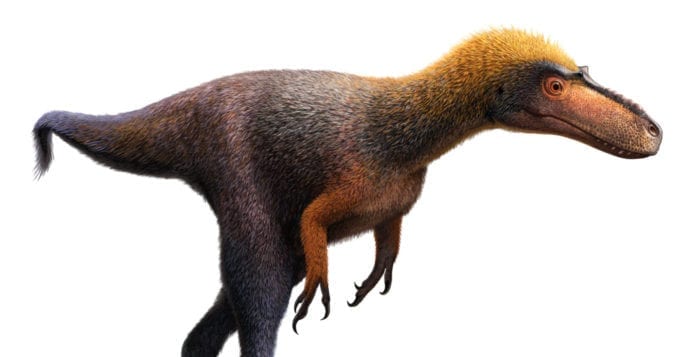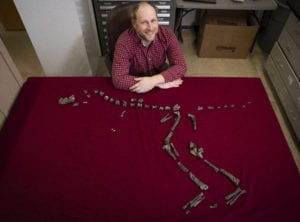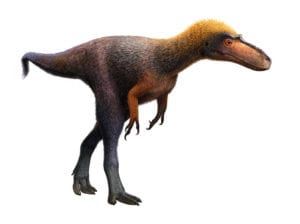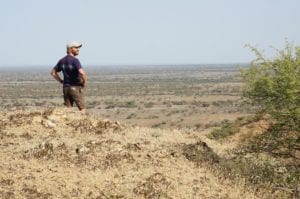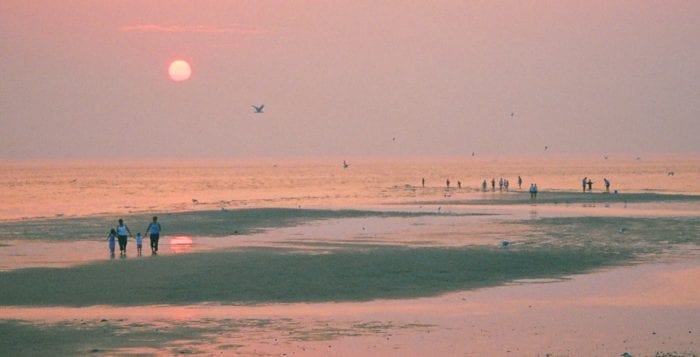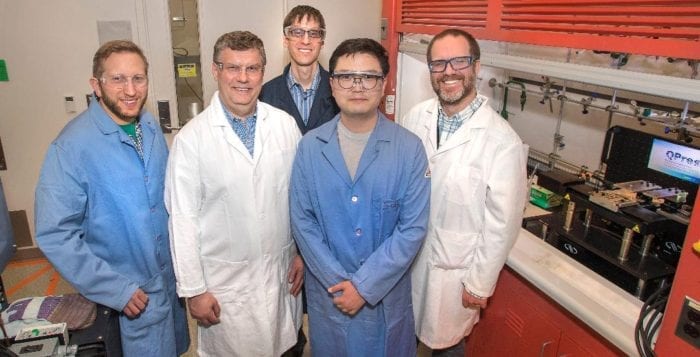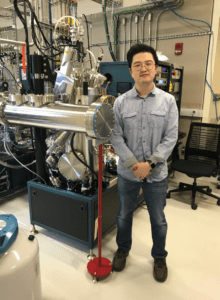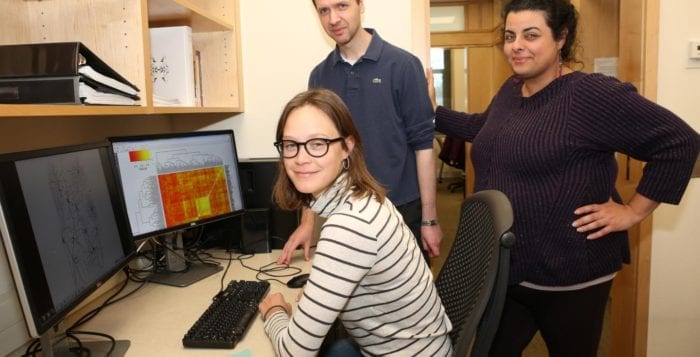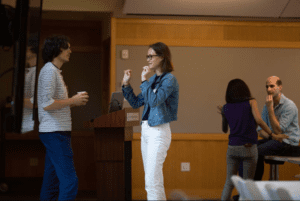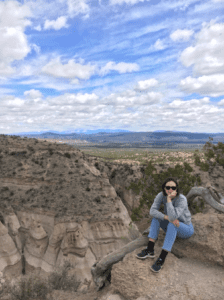By Daniel Dunaief
Bruce Stillman, the president and CEO of Cold Spring Harbor Laboratory, was recently awarded the prestigious Canada Gairdner International Award for his contributions to research about the way DNA copies itself. The 60-year-old prize, which Stillman will receive in a ceremony in October and that he shares with his former postdoctoral fellow John Diffley, includes a financial award of $100,000 Canadian dollars that he can spend however he’d like.
A native Australian, Stillman, who has been at Cold Spring Harbor Laboratory since 1979, recently shared his thoughts about the award, research at the lab and his concerns about science in society with Times Beacon Record News Media.
How does it feel winning the Gairdner Award?
It’s one of the most prestigious awards in the life sciences in the world and it’s certainly a great honor to win it and to join the list of spectacular scientists in the history of the award. There are some really fantastic scientists who I very much admire who have received this award.
How does it relate to the research you’ve conducted?
The field of DNA replication and chromosome inheritance was recognized. It is something I’ve devoted my entire career to. There are a lot of people that have made important contributions to this field. I’m pleased to be recognized with [Diffley] who was my former postdoc. [It’s validating] that the field was recognized.
Has CSH Laboratory been at the cutting edge of discoveries using the gene-editing tool CRISPR?
Cold Spring Harbor didn’t discover CRISPR. Like many institutions, we’ve been at the forefront of applying CRISPR and gene editing. The most spectacular application of that has been in the plant field. Zachary Lippman, Dave Jackson and Rob Martienssen are using genetic engineering to understand plant morphogenesis and development, thereby increasing the yield of fruit. Hopefully, this will be expanded into grains and have another green revolution.
CSHL has also been making strides in cancer research, particularly in Dave Tuveson’s lab, with organoids.
Organoids came out of people studying development. Hans Clevers [developed organoids] in the Netherlands … Tuveson is at the forefront of that. The full promise hasn’t been realized yet. From what I’ve seen, we are quite excited about the possibility of using organoids as a tool to get real feedback to patients. It is rapidly moving forward with the Lustgarten Foundation and with Northwell Health.
What are some of the other major initiatives at CSHL?
The laboratory’s investment about 10 or 15 years ago in understanding cognition in the brain has paid off enormously. Neuroscientists here are at the forefront of understanding cognition and how the brain does computation in complicated decisions. [Scientists are also] mapping circuits in the brain. It took a lot of investment and kind of the belief that studying rodent cognition could have an impact on human cognition, which was controversial when we started it here, but has paid out quite well. At the same time, we are studying cognitive dysfunction particularly in autism.
Any other technological advances?
There’s been a real revolution in the field of structural biology… [Researchers] have the ability to look at single biological molecules in the electron microscope. It shoots electrons through a grid that has individual biological molecules. The revolution, which was done elsewhere by many people actually, led to the ability to get atomic resolution structures of macro molecular complexes.
Cold Spring Harbor invested a lot of money, well over $10 million to build a facility and staff a facility to operate this new technology. I’ve been working on this area for about 12, 13 years now … Our structural biologists here in neuroscience, including neuroscientists Hiro Furukawa and Leemor Joshua-Tor have really helped introduce a lot of new biology into CSHL.
What are some of the newer efforts at the lab?
One of the big new initiatives we started is in the field of cancer. As you know by looking around, there’s an obesity epidemic in the Western world. We started a fairly large initiative, understanding the relationship between obesity and cancer and nutrition, and we’re not unique in this. We’re going to have some significant contributions in this area.
Cancer cells and the tumor affect the whole body physiology. The most severe [consequence] is that advanced cancer patients lose weight through a process called cachexia. We hired [new staff] in this new initiative, renovated a historic building, the Demerec building at a fairly substantial expense, which was supported by New York State.
What will CSHL researchers study related to obesity?
We’re absolutely going to be focusing on understanding mostly how obesity impacts cancer and the immune system, then how cancer impacts the whole body physiology. Hopefully, once we start to understand the circuits, [we] will be able to intervene. If we can control obesity, we will by logic reduce cancer impact.
What worries you about society?
What worries me is that there is a tendency in this country to ignore science in policy decisions … The number of people not getting vaccinated for measles is ridiculous. There is this kind of pervasive anti-science, anti-technology view that a lot of Americans have. They want the benefits of science and everything that can profit for them.
There are certain groups of people who misuse data, deliberately abuse misinformation on science to promote agendas that are completely irrational. One of the worst is anti-vaccination. … We should as a society have severe penalties for those who choose to go that route. They shouldn’t send their children to schools, participate in public areas where they could spread a disease that effectively was controlled. Imagine if polio or tuberculosis came back?
How is the lab contributing to education?
People need to act like scientists. It’s one of the reasons we have the DNA Learning Center, to teach people to think like scientists. If 99.99 percent of the evidence suggests [something specific] and 0.01 percent suggest something [else], you have to wonder whether those very small and vocal minority are correct.

